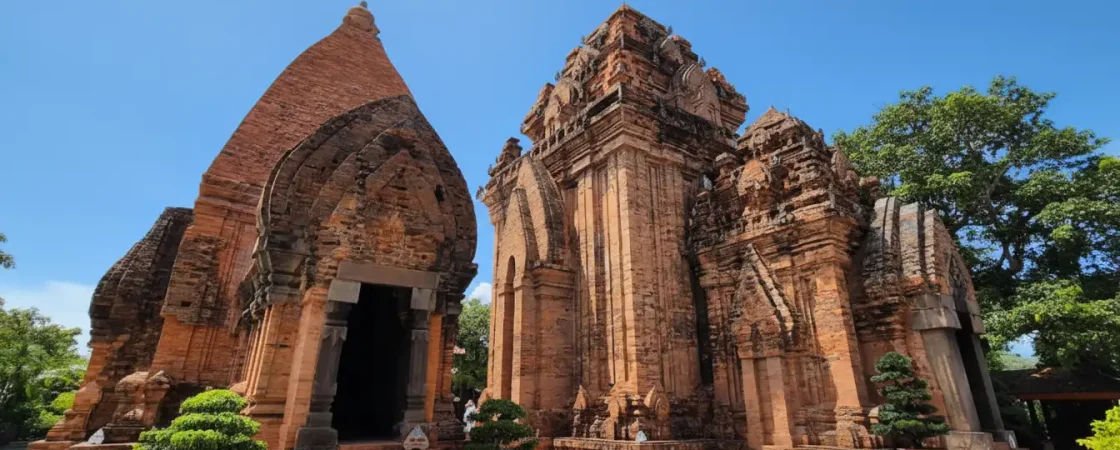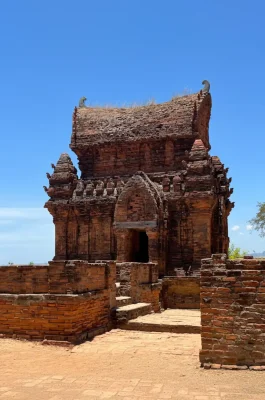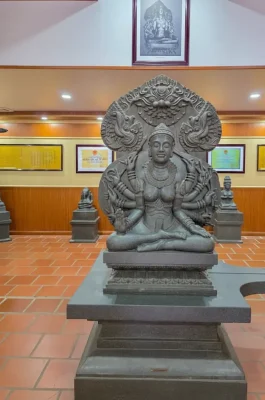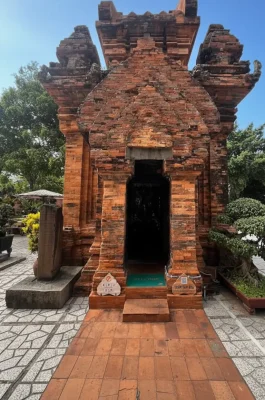Po Nagar Temple, locally known as Thap Ba (The Lady’s Tower), represents a remarkable architectural and cultural legacy of the Cham people in Vietnam. Built between the 8th and 13th centuries, the complex served as a major religious center of the ancient Champa Kingdom, dedicated primarily to the Goddess Yan Po Nagar, or Thien Y Thanh Mau Ana in Vietnamese, revered as the Mother Goddess of the Country. Tourists visit the site not only for its historical significance but also to admire the unique Cham architecture.
History, Culture, and the Cham Civilization
The temple stands as a powerful testament to the flourishing Hindu period of the Champa Kingdom. A stele dating back to 781 $\text{CE}$ mentions the temple, indicating its long history. Over the centuries, the towers have suffered from foreign invasion and the elements, but they remain largely intact.
The temple’s primary dedication goes to the Goddess Po Nagar, who, according to Cham and Vietnamese legends, taught the local people essential skills like farming, weaving, and living harmoniously. The annual Thap Ba Festival, held from the 20th to the 23rd of the third lunar month, draws thousands of pilgrims and tourists, celebrating the Goddess’s merits and cultural heritage. This festival offers a vibrant display of traditional Cham and Vietnamese rituals.
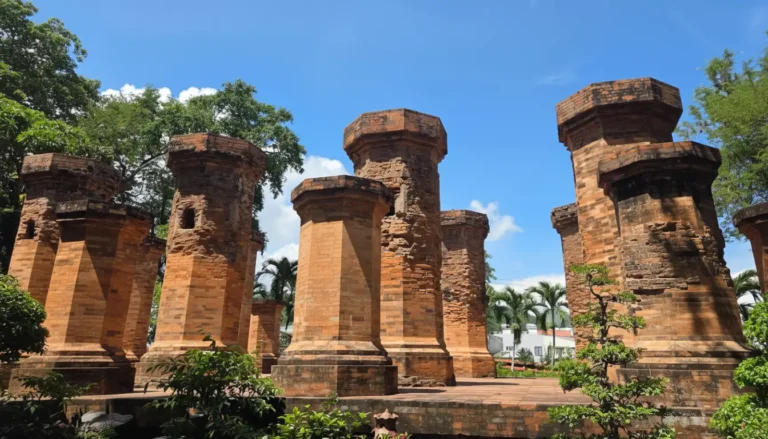
Architectural Highlights
The complex is divided into three main levels, ascending the hill:
The Gate Tower (Lower Level): Only the foundations remain today, which once marked the entrance to the sacred grounds.
The Mandapa (Middle Level): Worshipers use this rectangular hall to rest and prepare their offerings before entering the main towers. The most distinctive feature is the four rows of massive octagonal brick pillars, providing a strong visual sense of ancient craftsmanship.
The Main Temple Towers (Upper Level): This platform features the remaining brick towers, built without visible mortar. The largest and most important tower is the one dedicated to Po Nagar, standing approximately 23 meters tall. Intricate terracotta and stone carvings adorn the exterior, depicting deities, animals, and mythical scenes. Inside the main tower, visitors find a black granite statue of the Goddess, a magnificent piece of Cham sculpture.

Essential Visitor Information and Tips
People should plan their visit to avoid the hottest part of the day, making the early morning or late afternoon the ideal time. Since the temple is an active place of worship, visitors should adhere to a modest dress code.
| Information Point | Detail (Reference Price) | Note |
|---|---|---|
| Location | On Cu Lao Hill, near the mouth of the Cai River. | Only 2 km north of Nha Trang city center. |
| Entrance Fee | Around 30,000 VNĐ per person | Tickets are purchased at the entrance gate. |
| Operating Hours | Typically 8:00 AM – 6:00 PM daily | Hours may be extended during festivals. |
| Dress Code | Require covering shoulders and knees. | Sarongs or rental hoodies are often available at the entrance. |
| Transportation | Easily accessible by taxi, local bus (Bus No. 4), or motorbike. | Taxis charge about 50,000 to 70,000 VNĐ from the city center. |
| Telephone | Not commonly published for general inquiries. | Inquire through local tourist information centers if needed. |
Visitors should remember to remove their shoes before entering the main towers. Furthermore, they must respect the active worship that takes place in the sanctuary. The towers offer excellent viewpoints, allowing guests to take beautiful photographs of the river and the city skyline.
